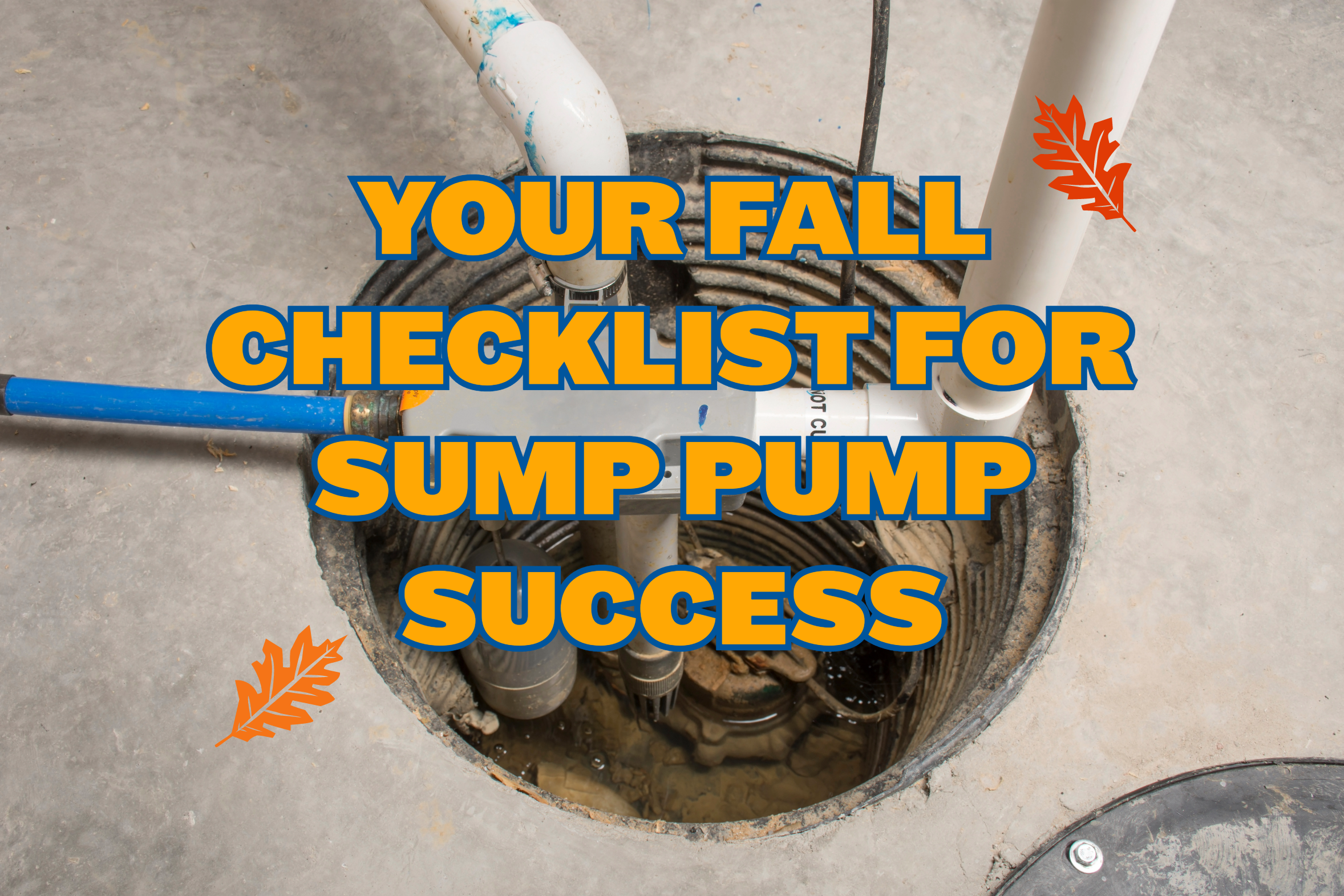Sump pumps are vital throughout the year, but their importance is amplified during the fall and winter seasons, especially in regions characterized by cold weather and snowfall. This means that for us residents of Ohio, proper maintenance of our sump pumps is an absolute necessity. We want to help you maintain optimal sump pump performance in the upcoming colder months because a plumbing catastrophe during the coldest months of the year is never fun! So, here are invaluable tips and tricks from your knowledgeable experts at Middletown Plumbing & Drain.
YOUR FALL CHECKLIST FOR SUMP PUMP SUCCESS:
Step 1: Remove the Cover
Begin by opening the sump pump pit or basin by carefully taking off its cover. Once the lid is removed, inspect the interior. If you peek in and find any debris, particles, or rocks, it is important to remove them gently. These foreign objects have the potential to obstruct the sump pump and result in overflow problems. That’s not something we recommend!
Step 2: Check the Drain Hose
Ensure that the drain hose is firmly connected and free from any obstructions or ice buildup, especially during winter. A blocked or frozen drain hose can cause your sump pump to run continuously, and it will also hinder the proper discharge of accumulated water from the pit. For this reason, it’s a good idea to check on the drain hose periodically throughout the year.
Step 3: Examine the Inlet Screen
This is a crucial step on our checklist, as the inlet screen allows water to enter the sump pump’s pit effectively. Therefore, if the inlet screen is blocked, it can prevent water from accessing the pit, which may lead to a potentially flooded basement. Not ideal! By regularly checking and cleaning the inlet screen, you can mitigate the risk of basement flooding and ensure the smooth operation of your sump pump.
Step 4: Look at the Float Mechanism
Confirm the float mechanism in your sump pump is still working properly. This is the component that determines when the pump activates to remove excess water. So, verifying that the float component can move without obstruction is yet another essential step you don’t want to skip. A malfunctioning float can lead to your pump either failing to respond when needed or it can cause it to run continuously, which can potentially cause damage to the pump’s engine over time.
Step 5: Perform a Test Run
To activate your pump, add a bucket of water to the sump pit. Then observe its performance closely to ensure it responds accordingly and works to remove the excess water. If the pump fails to run, try checking to see If it is still connected to the power source and that the power cord has no signs of damage or malfunction.
Step 6: Inspect the Discharge Pipe
It is also important to verify that the water discharged by the sump pump flows away from your house. So, take a moment to observe the location of the discharge pipe outside when your sump pump is operating. Confirm that it directs water at a safe distance from your home. Placing the discharge point too close may result in water seepage back into the pump, leading to continuous and inefficient operation. This excessive use can accelerate wear and tear, potentially reducing the lifespan of your sump pump. However, it is crucial to remember not to place the discharge pipe too close to other houses, buildings, or structures while also ensuring it remains within your property boundaries. Remember, discharging excess water onto your neighbor’s property is strongly discouraged. So, maintaining proper drainage within your property is essential to prevent inconvenience to your neighbors.
Step 7: Have an Emergency Plan
It is highly advantageous to have a backup battery or generator, particularly during severe rainstorms that may result in power outages. By having a contingency plan in place, you can have the confidence and peace of mind that everything will be taken care of if the power goes out or unforeseen circumstances arise.
For your sump pump to operate effectively throughout the coldest months, it is crucial to implement proper fall winterization. This ensures the success of your sump pump system and provides essential protection against potential water damage during the cold season.
Having trouble with your sump pump? Don’t delay; call Middletown Plumbing & Drain today at (937) 298-9979, or schedule an appointment online now by clicking here!

